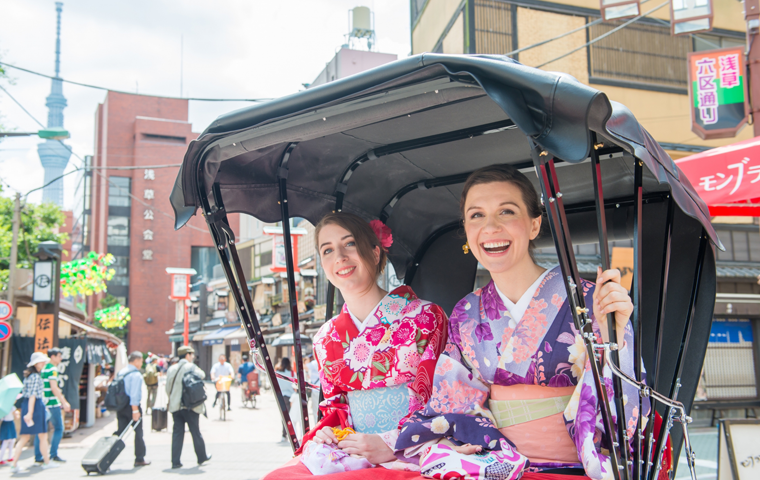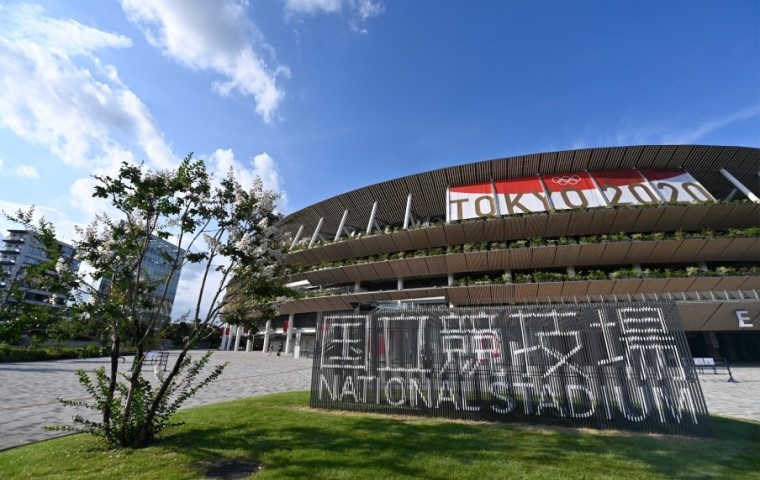Record-Breaking Tourism to Japan—and What Lies Beneath
Related Articles
A Historic Surge: The Multiple Forces Drawing the World to Japan

In January 2025, Japan’s inbound tourism market reached a historic turning point. According to the Japan National Tourism Organization (JNTO), the number of foreign visitors to Japan that month hit 3,781,200, the highest monthly total on record. This figure represents an astonishing 40.6% increase year-on-year and far surpasses the previous record of roughly 3.49 million set in December 2024.
This feverish boom was not driven by a single factor; rather, it was a “perfect storm” of tailwinds—economic conditions, seasonal timing, and geopolitical shifts in travel flows all aligning at once.
The most powerful engine behind these record numbers has been the continued historic weakness of the yen. For overseas travelers, nearly all spending in Japan—from lodging and transportation to shopping—has become cheaper in their home currencies, boosting their purchasing power to unprecedented levels. This economic incentive has undoubtedly helped make Japan one of the world’s most attractive travel destinations.
A direct catalyst pushing January’s tally even higher was the timing of Lunar New Year. Whereas the holiday fell in February 2024, in 2025 the break occurred in January, concentrating huge numbers of travelers from East and Southeast Asia into that month. This calendar quirk significantly amplified the year-on-year growth rate.
Particularly notable was the dramatic comeback of the Chinese market, which had lagged in its recovery. In January, visitors from China reached 980,000, the highest of any country and a January record. That represents an explosive 135.6% increase year-on-year, effectively restoring the final missing piece of the post-COVID inbound landscape. Some analysts also suggest that issues arising in other popular destinations, such as Thailand, redirected traveler interest toward Japan.
Crucially, the boom did not rely on Asia alone. Of the 23 markets surveyed, 17—including the U.S., Canada, Australia, and numerous European countries—set January records, confirming Japan’s global appeal. Australia, in particular, posted its highest-ever monthly tally as winter-sports travelers surged in pursuit of Japan’s renowned high-quality powder snow. Physically enabling this diverse demand was the recovery and expansion of air capacity. Major Japanese carriers JAL and ANA, along with LCCs, boosted winter schedules on key routes such as Hong Kong, Taipei, and Melbourne, positioning themselves to meet surging demand. In short, synchronized gears—economics, seasonality, market recovery, and infrastructure—clicked into place to produce January’s historic numbers.
Economic Windfall and a Qualitative Shift in Spending
Record visitor counts are delivering enormous benefits to Japan’s economy. Inbound spending for Q1 2025 (Jan–Mar) reached ¥2.272 trillion, up 28.4% year-on-year. At this pace, annual spending could surpass ¥9 trillion, solidifying inbound tourism as one of Japan’s leading “export industries,” second only to automobiles.
Behind this tidal wave of spending, however, lies an important qualitative shift: traveler behavior is moving decisively from “goods consumption” (shopping) to “experience consumption” (services and activities). The data make this clear. In the Q3 2025 spending mix, accommodation rose to 36.6% of the total (up 2.7 points year-on-year), while shopping fell to 25.5% (down 3.1 points). This suggests that, particularly among repeat visitors, more travelers are seeking deeper, more meaningful experiences.
Spending patterns also differ sharply by origin. Per-capita travel outlays are highest among visitors from Australia (¥367,000), France (¥338,000), and the U.K. (¥321,000). These travelers tend to spend heavily on lodging; for example, Australians spend ¥161,000 per person on accommodation—quintessential experience-first behavior.
By contrast, Chinese visitors, who make up the largest volume cohort, remain powerful drivers of goods consumption. Their per-capita shopping spend stands at ¥106,000, far outpacing other nationalities and underscoring their continued importance to Japan’s retail sector.
This polarization highlights a new reality for Japan’s tourism industry: it must serve two large customer segments with distinct needs—experience-oriented, high-spending travelers from Europe, North America, and Oceania, and volume-driven, high-purchasing travelers from Asia. Going forward, successful inbound strategies will hinge on finely segmented offerings: deeper traditional culture experiences (tea ceremony, martial arts), specialized adventure and gastronomy tourism, and modern interests like anime pilgrimage. Japan’s tourism market is entering a complex, multi-layered growth stage that cannot be captured by a single model.
The Shadow of Prosperity: Overtourism as a Critical Challenge
While record visitor numbers bring economic gains, Japanese society is beginning to creak under the strain. Overtourism has evolved from a concern limited to a few famous spots into a structural issue threatening the country’s overall sustainability. A root cause is the extreme concentration of roughly 70% of visitors in the Tokyo–Osaka–Kyoto metropolitan triangle.
The most acute symptoms are seen in Kyoto, where public buses are so packed with tourists that residents often can’t use their daily transport. Chronic traffic congestion plagues destinations such as Kamakura and Hakone, disrupting local life and economic activity. Concentrated footfall also places excessive pressure on nature and cultural heritage. On Mt. Fuji, the risks of ill-prepared overnight “bullet climbs” and worsening litter prompted new climbing regulations starting in the summer of 2025. In Biei, Hokkaido, tourists trespassing into privately owned farmland for photos led farmers—after much anguish—to fell iconic trees that had symbolized the landscape.
Meanwhile, noise, littering, and etiquette violations—such as unauthorized photography of geiko and maiko in Gion—have created serious friction with local communities. The rapid growth of visitor facilities has driven up rents and prices, fueling so-called tourism gentrification that pressures residents and even threatens the viability of local communities.
Exacerbating demand-side pressures is a structural labor shortage on the supply side. Even before COVID, Japan’s tourism and lodging sectors struggled with low pay, long hours, and few days off, leading to high turnover. Many workers left during the pandemic and have not returned, even as demand has rebounded. As a result, hotels are sometimes forced to cap occupancy simply because they lack staff to deliver service. According to projections by the World Travel & Tourism Council (WTTC), Japan is on track to face the world’s most severe tourism labor shortage by 2035—one of the gravest threats to the industry’s future.
With excess demand (overtourism) and limited supply capacity (labor shortages) advancing in parallel, a negative spiral emerges: visitor satisfaction declines, residents’ lives are disrupted, and frontline workers are exhausted. Today’s exuberant boom rests on a fragile foundation; left unchecked, Japan’s tourism brand itself could suffer serious damage.
Toward a Sustainable Tourism Nation: A National Strategy Shift from Volume to Quality

Confronted with the bright promise and dark side of explosive inbound growth, Japan now faces a fundamental strategic shift: moving from chasing sheer visitor numbers to prioritizing per-capita spending and quality of stay—that is, transitioning to a sustainable tourism model. The government has clearly embraced this direction, setting the goal of swiftly achieving ¥5 trillion in inbound spending, and advancing a national strategy built on three pillars: sustainable tourism, higher spending, and regional dispersion.
Concrete anti-overtourism measures are already underway. On Miyajima (Hiroshima Prefecture), authorities began collecting an island entry tax from tourists, channeling the revenue into traffic management and restroom maintenance. Mt. Fuji introduced caps on climber numbers and an online advance reservation system. Cities such as Kamakura and Hakodate (Hokkaido) are pushing tourism DX, using smartphone apps and digital signage to visualize congestion in real time and encourage voluntary dispersal by visitors.
The more fundamental solution, however, lies in shifting visitors from overcrowded urban centers to regional areas. The government is strengthening the functions of DMOs (Destination Management/Marketing Organizations) as core entities to refine regional attractions and develop compelling travel products, thereby driving stronger regional draw. The aim is to uncover under-recognized destinations off the “Golden Route” and open new frontiers in tourism—adventure tourism in Hokkaido and Kyushu, and gastronomy tourism that showcases diverse local cuisines.
Another strategic pillar is attracting high-value (luxury) travelers. Based on data showing that roughly 1% of visitors account for about 14% of total spending, the government has designated 11+ regions as model destinations. It is prioritizing the development of exclusive offerings available only in Japan—castle stays with private overnights, helicopter sightseeing, and private cultural experiences led by master artisans.
Collectively, these initiatives aim to evolve Japan’s tourism from a simple “destination” into a managed tourism ecosystem integrating technology, policy, marketing, and labor reform. To counter the acute labor shortage, authorities are supporting labor-saving investments such as self check-in systems, and expanding acceptance of foreign workers through “Specified Skilled Worker” visas.
The record figures of January 2025 both demonstrate the enormous potential of Japanese tourism and serve as a final warning about its sustainability. The challenge now is to convert this exuberance from a passing boom into a stable growth engine that benefits the entire nation. Japan’s high-stakes bid to do so is beginning right now.




